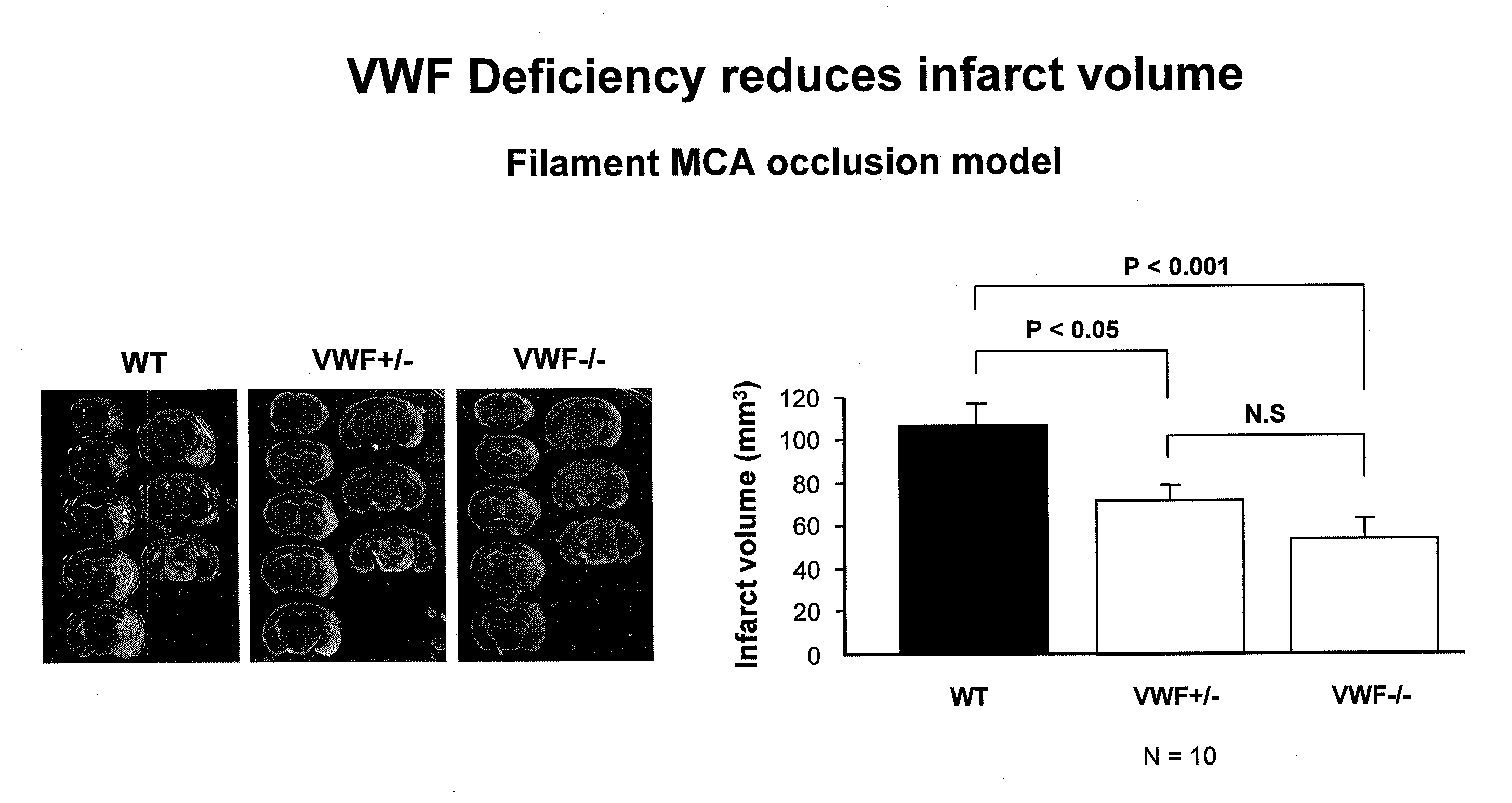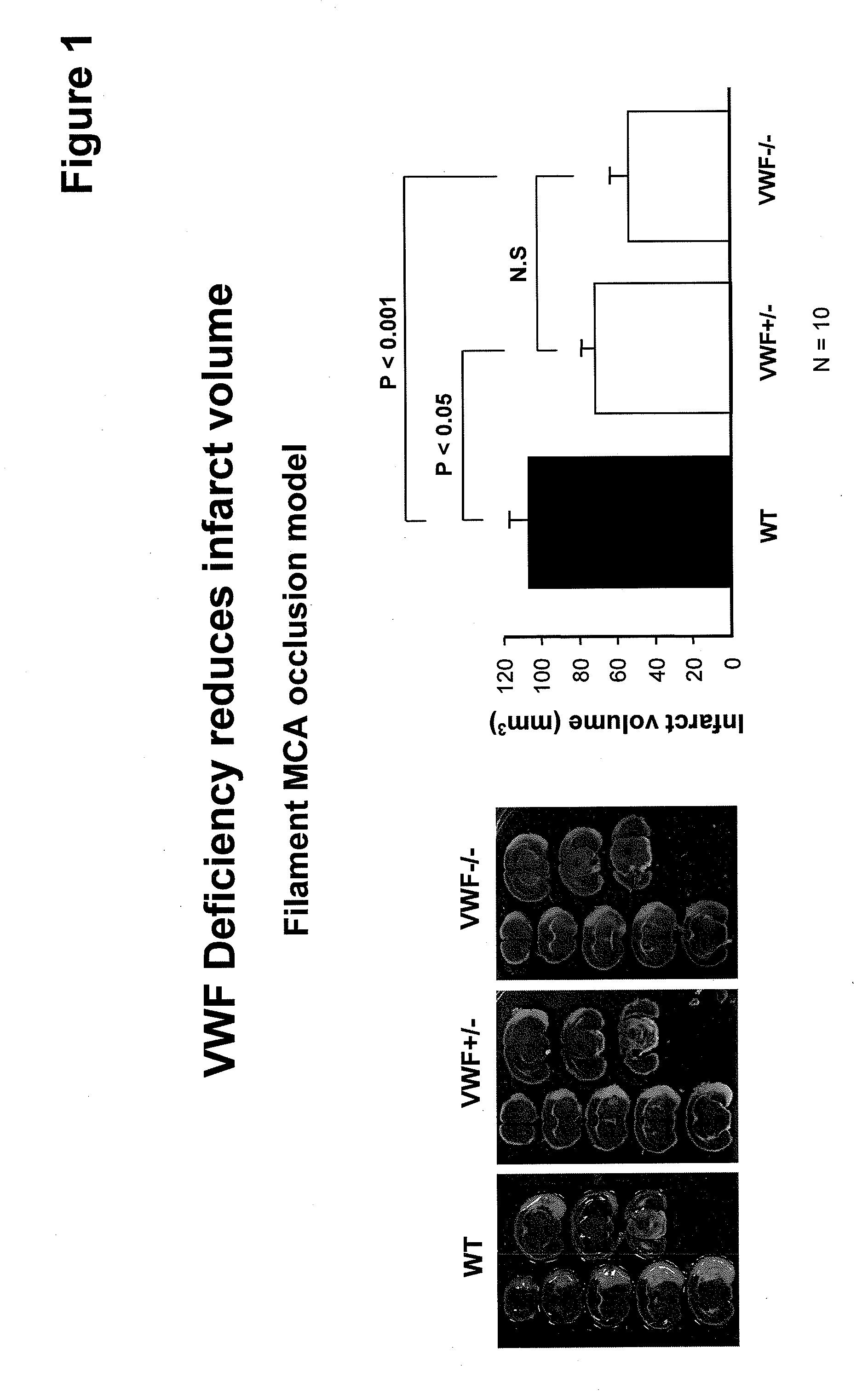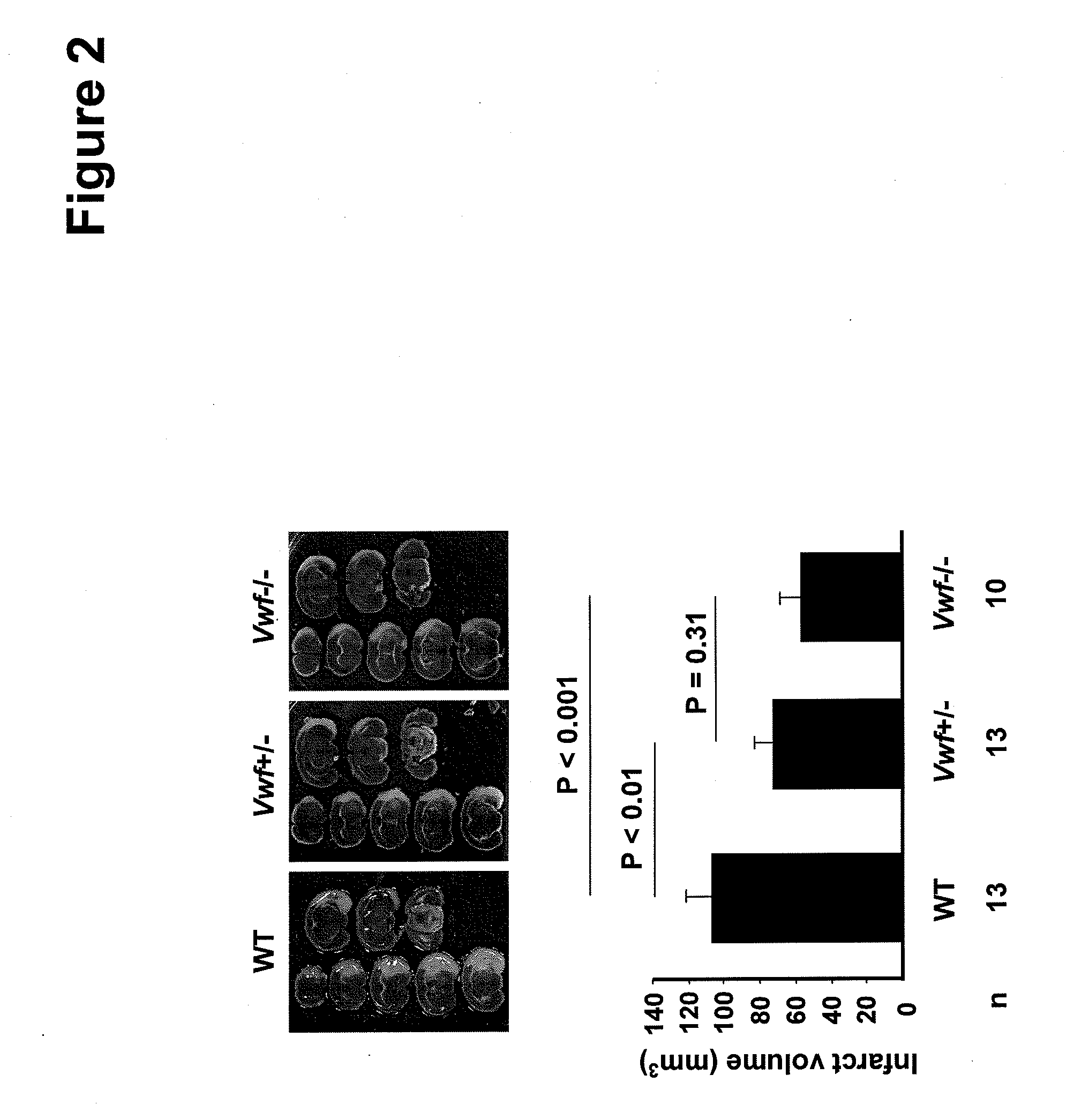Von willebrand factor (VWF) inhibitors for treatment or prevention of infarction
a technology of vwf and inhibitors, which is applied in the field of treatment or prevention of infarction, can solve the problems of reducing promoting infarction, and promoting blood clotting, so as to reduce the ability of vwf to form high molecular weight multimers, suppress the expression or activity of vwf, and promote infarction.
- Summary
- Abstract
- Description
- Claims
- Application Information
AI Technical Summary
Benefits of technology
Problems solved by technology
Method used
Image
Examples
example 1
B. Example 1
Deficiency in VWF Reduces Infarct Volume in the Intraluminal MCAO Model in Mice
[0124]Transient occlusion of the right middle cerebral artery (MCA) was achieved by a monofilament insertion up to the MCA. After 2 hours, the monofilament was withdrawn to allow reperfusion. Infarct volume was measured by 2% 2,3,5-triphenyltetrazolium hydrochloride (TTC) staining at 24 h after cerebral ischemia (FIG. 1). Data are expressed as mean±SEM (n=10).
[0125]In a follow up test to address the importance of VWF levels in stroke outcome, we subjected wild-type (WT), Vwf± and Vwf− / − mice to 2 hours of focal cerebral ischemia using the MCAO stroke model, and examined mouse brains 22 hours later using triphenyl-2,3,4-tetrazolium-chloride (TTC) staining to quantify infarct size (FIG. 2). We observed that deficiency in VWF caused a two-fold reduction in infarct volume compared to WT (PProc Natl Acad Sci USA 95:9524-29).
[0126]The results show that deficiency of VWF dramatically reduces infarct ...
example 2
C. Example 2
Recombinant Human VWF Increases Infarct Volume
[0127]Mice were subjected to 2 h transient focal ischemia. Recombinant human VWF (0.8 mg / kg body weight) was infused 10 min before reperfusion and repeated 3 h later. Treatment with rhVWF increased infarct volume 24 h after stroke compared with vehicle-treated control group (FIG. 3). Data are expressed as mean±SEM (n=4-5).
example 3
D. Example 3
ADAMTS13 Negatively Regulates Infarction after Cerebral Ischemia
[0128]Mice were subjected to 2 h transient focal ischemia and infarct volume was measured 24 h after stroke (FIG. 4). Data are expressed as mean±SEM (n=13-15).
[0129]We ran a follow up test to evaluate the protective role of ADAMTS13 in ischemic stroke. Indeed, Adamts13− / − mice showed significantly increased infarct volume after MCAO compared to WT mice (124.12±6.59 vs. 103.65±6.69, P5).
[0130]We next compared the inflammatory response of WT and Adamts13− / − mice to stroke. At 22 hours after the MCAO, we did not observe differences in neutrophil recruitment to the peri-infarct region as determined by counting the neutrophils in H&E-stained brain sections (WT 36±4, Adamts13− / −40±9 per mm2; not significant). Within the infarct, neutrophil counts were lower though similar in these two groups. We measured plasma levels of IL-6, an indication of peripheral immune system activation, at 22 hours after 2 hours MCAO. Co...
PUM
| Property | Measurement | Unit |
|---|---|---|
| time | aaaaa | aaaaa |
| Bleeding time | aaaaa | aaaaa |
| pH | aaaaa | aaaaa |
Abstract
Description
Claims
Application Information
 Login to View More
Login to View More - R&D
- Intellectual Property
- Life Sciences
- Materials
- Tech Scout
- Unparalleled Data Quality
- Higher Quality Content
- 60% Fewer Hallucinations
Browse by: Latest US Patents, China's latest patents, Technical Efficacy Thesaurus, Application Domain, Technology Topic, Popular Technical Reports.
© 2025 PatSnap. All rights reserved.Legal|Privacy policy|Modern Slavery Act Transparency Statement|Sitemap|About US| Contact US: help@patsnap.com



